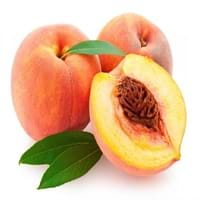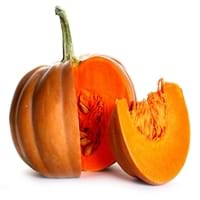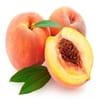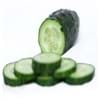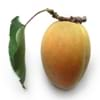Health Benefits
Cancer prevention, Heart care, Improves eye vision, Reduces stress, Regulation of heart rate
Arthritis treatment, Cancer prevention, High Cholesterol Regulation, Lower blood pressure, Helps Prevent cataract, Prevents gall stones, Ulcer treatment, Weight loss properties
General Benefits
Anti oxidant properties, Eye care
Boosts respiratory health, Eliminate parasites and infections, Protects against birth defects, Strengthens bones
Skin Benefits
Heals sunburn, Reduces wrinkles, Treatment of skin diseases
Heals sunburn, Hydrates skin, Skin rejuvenation
Hair Benefits
Prevents hair loss
Regulates hair growth
Allergy Symptoms
Abdominal pains, Anaphylaxis, Breathing difficulty, Diarrhea, Dizziness, Hives, Itching, Lightheadedness, Nasal congestion, Nausea, Swelling of mouth, tongue or lips, Tingling sensation in mouth, Vomiting, Wheezing
Abdominal cramps, Anaphylaxis, Digestive Problems, Dizziness, Eczema, Fainting, Hives, Inflammation, Itching, Tingling sensation in wrist and face, Vomiting, Wheezing
Side Effects
Allergic reaction
Kidney and gallbladder diseases
Best Time to Eat
As a snack in the late afternoon, Eat the fresh ones, avoid mixing with any other foods, don't eat after meal., Morning time (before lunch)
Along with meal, Don't eat after meal, Morning time (before lunch)
Vitamin B5 (Pantothenic Acid)
Vitamin C (Ascorbic Acid)
Vitamin K (Phyllochinone)
Calories in Fresh Fruit with Peel
Calories in Fresh Fruit without Peel
Not Available
Calories in Frozen Form
Not Available
Calories in Dried Form
Not Available
Season
Autumn, Summer
All seasons
Varieties
Reliance, Sweet Scarlet, Spring Snow, Sugar May, Santa Rosa, Red Beauty, Glowhaven, Cresthaven and Redhaven Peaches
Jarrahdale, Peanut, Lakota, Cow, Sugar, Caribean, Red kuri, Buttercup and Pink lady
Color
Pink, Red, White, Yellow, Yellowish-orange
Blue, Green, Orange, Red, White
Inside Color
Yellow
Creamy Yellow
Taste
Sweet
Creamy, Soft, Sweet
Soil Type
Sandy loam, Well-drained
Clay loam, Sandy loam, Well-drained
Climatic Conditions
Cold, Warm
Warm to hot climate
Facts about
- In china, peaches are considered as a symbol of good luck.
- From 1982, august is National peach month in USA.
- In roman times, Peaches were also called as Persian apples, as people assumed that they originated from Persia.
- The name pumpkin has its roots in the Greek word ‘pepon’, meaning ‘large melon’.
- The largest pumpkin ever grown weighed 1,140 pounds.
- Pumpkins were once known for removing freckles & curing snake bites.
Other Countries
Greece, Italy, Spain, United States of America
Egypt, India, Indonesia, Iran, Italy, Mexico, Russia, Spain, United States of America
Top Importer
Germany
United States of America
Botanical Name
Prunus persica
Cucurbita maxima
Synonym
Not Available
Cucurbita pepo, Squash
Subkingdom
Tracheobionta
Tracheobionta
Division
Magnoliophyta
Magnoliophyta
Class
Magnoliopsida
Magnoliopsida
Subclass
Rosidae
Dillenhidae
Order
Rosales
Cucurbitales
Family
Rosaceae
Cucurbitaceae
Species
P. persica
Cucurbita mixta
Generic Group
Rose
Not Available
Difference Between Peach and Pumpkin
We might think that Peach and Pumpkin are similar with respect to nutritional value and health benefits. But the nutrient content of both fruits is different. Peach and Pumpkin Facts such as their taste, shape, color, and size are also distinct. The difference between Peach and Pumpkin is explained here.
The amount of calories in 100 gm of fresh Peach and Pumpkin with peel is 39.00 kcal and 26.00 kcal and the amount of calories without peel is Not Available and 30.00 kcal respectively. Thus, Peach and Pumpkin belong to Low Calorie Fruits and High Calorie Fruits category.These fruits might or might not differ with respect to their scientific classification. The order of Peach and Pumpkin is Rosales and Cucurbitales respectively. Peach belongs to Rosaceae family and Pumpkin belongs to Cucurbitaceae family. Peach belongs to Prunus genus of P. persica species and Pumpkin belongs to Cucurbita genus of Cucurbita mixta species. Beings plants, both fruits belong to Plantae Kingdom.
